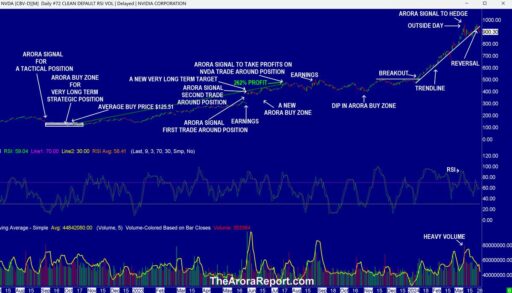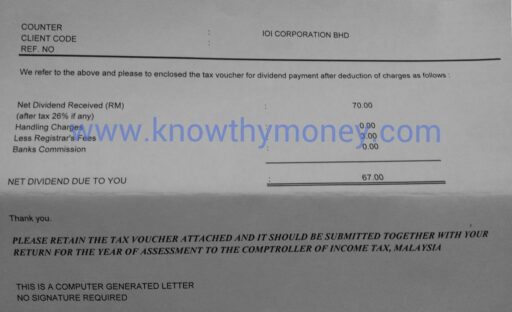AT&T’s stock price is a subject of interest for investors looking to tap into the telecom sector. Analyzing its market movements and investment potential involves understanding various technical indicators, historical trends, and the company’s financial health. As AT&T navigates through a competitive landscape, it’s crucial to assess its stock’s performance and identify strategic investment opportunities. This article delves into the key factors that influence AT&T’s stock price and offers insights for investors considering AT&T as part of their investment portfolio.
Key Takeaways
- AT&T’s stock has shown controlled movements with low volatility, indicating a lower risk for investors and suggesting a stable investment opportunity.
- The stock is currently in a horizontal trend, with a high likelihood of trading between $16.87 and $18.38 over the next three months, presenting a predictable range for strategic trading.
- Recent upticks in price and volume signal a positive short-term outlook, with the stock gaining for three consecutive days and showing a 2.09% increase over the past two weeks.
- AT&T’s stock holds buy signals from both short and long-term moving averages, and the current price level may present a buying opportunity based on these indicators.
- The company’s market capitalization stands at $122.88 billion, with a historical return of -53.09% over the last 26 years, highlighting the importance of dividend yields and current valuation in investment decisions.
Market Analysis and AT&T’s Stock Performance

Recent Price Fluctuations and Volume Analysis
AT&T’s stock has shown notable activity in the recent trading sessions. In 6 of the last 10 days, the stock price has increased, reflecting a 2.09% rise over the past two weeks. This uptick in price was accompanied by a surge in trading volume, with 2 million more shares traded than the previous day, totaling 35 million shares at a value of approximately $606.46 million.
The trading volume is a critical indicator of investor interest and can often precede price movements. The following table summarizes the recent trading activity:
| Date Range | Price Increase (%) | Volume Increase (Million Shares) |
|---|---|---|
| Last 10 days | 2.09 | 2 |
| Last 2 weeks | – | – |
The convergence of rising prices and increasing volume may suggest a strengthening market sentiment towards AT&T’s stock.
Understanding the nuances of market activity, such as the day high/low, opening prices, and average volume, is essential for investors looking to capitalize on AT&T’s stock movements. These metrics provide insights into the stock’s liquidity and volatility, which are crucial for making informed investment decisions.
Support and Resistance Levels
Understanding the support and resistance levels of AT&T’s stock is crucial for investors looking to gauge potential price movements. Recent data indicates that AT&T has established a support level around $17.19, which could present a buying opportunity if the price approaches this point, as an upward reaction is often expected when support levels are tested.
On the resistance side, the stock has encountered a ceiling at $17.96, where selling pressure tends to increase, potentially capping upward price movements. The interplay between these levels suggests a range within which the stock price may fluctuate before breaking out.
The stock’s controlled movements and good liquidity contribute to a low-risk profile, with daily volatility remaining relatively stable.
Investors should monitor these levels closely, as a breach of resistance or support could signal a significant shift in market sentiment and momentum.
AT&T’s Historical Price Trends and Future Projections
AT&T’s stock price has experienced significant fluctuations over the years, with its all-time high reaching $45.24 in January 1999. Since then, the stock has seen various peaks and troughs, reflecting the dynamic nature of the telecom sector and broader market forces. The current horizontal trend suggests a high probability of the stock trading between $16.87 and $18.38 in the upcoming quarter.
The predicted opening price for AT&T on March 28, 2024, is $17.48, which is slightly below the current price of $17.55. This estimation is based on the previous day’s trading dynamics, including the high, low, and closing prices.
Analysts have noted that a break from the horizontal trend could lead to a significant volume increase, indicating a potential shift in investor sentiment and market direction. As investors consider AT&T’s stock for their portfolios, it’s crucial to monitor these trends and projections closely:
- Recent Horizontal Trend Analysis
- Expected trading range: $16.87 to $18.38
- Probability of staying within the range: 90%
- Predicted Opening Prices
- March 28, 2024: $17.48
- Current price: $17.55
While past performance is not indicative of future results, understanding historical trends can provide valuable context for evaluating AT&T’s investment potential.
Investment Signals and AT&T’s Stock Valuation

Short-Term and Long-Term Buy Signals
The AT&T stock holds buy signals from both short and long-term Moving Averages, suggesting a positive outlook. On the other hand, caution is advised as the market may be approaching overbought territory, which could indicate a potential trend reversal.
Investors should note the support levels at $17.20 and $17.04, as a breakdown below these could lead to sell signals. Conversely, a pivot bottom point identified on February 22, 2024, has already resulted in a 5.79% rise, with further increases expected until a new top pivot is found.
It’s important to consider volume trends alongside price movements. Currently, volume is increasing as the price ascends, which is typically a strong technical indicator. However, there are also negative signals that could affect short-term performance, including a sell signal from the 3-month Moving Average Convergence Divergence (MACD).
In summary, while several short-term signals are positive, suggesting a buying opportunity for AT&T stock, investors should remain vigilant for signs of a trend reversal.
Moving Average Indicators and Their Implications
Moving average indicators are pivotal tools in technical analysis, providing insights into AT&T’s stock trends by smoothing out price fluctuations over a specified period. The effect of the moving average is to smooth the price movement, highlighting the longer-term trend and aiding investors in distinguishing between typical market noise and actual trend reversals.
Investors often look at various moving average timeframes to gauge different market sentiments. For instance, a stock price above its moving average typically signals an upward trend or a buy, while a price below may suggest a downward trend or a sell. The table below summarizes key moving average indicators for AT&T:
| Moving Average (Days) | Current Price Position | Interpretation |
|---|---|---|
| 20 | Above | Potential Buy |
| 50 | Below | Watch Closely |
| 200 | Above | Strong Buy |
The current sentiment, derived from moving average analysis, is further substantiated by options overview and stochastic indicators, offering a forward-looking indication of investors’ sentiment.
It’s also important to consider the Weighted Alpha and the 14-Day Stochastic indicator, which provide a nuanced view of the stock’s performance. A positive Weighted Alpha indicates growth, particularly when recent price activity is factored more heavily. Current signals, such as from the Moving Average Convergence Divergence (MACD), must be monitored for short-term developments, as they can indicate potential sell signals over a three-month period.
Market Capitalization and Share Value Insights
Understanding the market capitalization of AT&T provides insight into the company’s size and investment stature within the telecom sector. Market capitalization is a reflection of the company’s total value as perceived by the stock market, calculated by multiplying the current stock price by the total number of outstanding shares. For AT&T, this figure provides a snapshot of its market dominance and financial scale.
Market capitalization is not static and fluctuates with the stock price, reflecting investor sentiment and market conditions.
The share value, on the other hand, is influenced by a variety of factors including company earnings, dividend payouts, and broader market trends. Here’s a quick look at some of AT&T’s key financial metrics:
| Metric | Value |
|---|---|
| Market Cap | $123.278B |
| PE Ratio (TTM) | 8.75 |
| EPS (TTM) | 1.97 |
| Forward Dividend & Yield | 1.11 (6.48%) |
These figures are essential for investors to consider when evaluating AT&T’s stock for potential investment. The PE ratio, for instance, can indicate whether the stock is undervalued or overvalued compared to industry averages. The EPS, or earnings per share, provides a measure of the company’s profitability on a per-share basis, while the dividend yield is a key factor for income-focused investors.
Strategic Investment Considerations for AT&T

Assessing the Risk and Reward of Intraday Trading
Intraday trading of AT&T stock requires a meticulous assessment of potential risks and rewards. The volatility of the stock within a single trading day can offer opportunities for profit but also poses a significant risk of loss.
- Risk Disclosure: Trading can result in losses, and not all investors may find this suitable.
- Leverage: Using leverage can amplify gains, but also increases financial risks.
- Market Hours: Trading outside regular hours may involve less liquidity and inferior prices.
Investors should be aware that past performance is not indicative of future results and that trading on margin can substantially increase financial risks.
It is crucial for traders to set appropriate stop-loss orders to manage risk effectively. For instance, a recommended stop-loss might be set at a certain percentage below the purchase price to limit potential losses.
Understanding the Impact of Horizontal Trends
Horizontal trends in the stock market are a critical aspect to consider when evaluating investment opportunities. Sideways trends indicate a period where the stock price moves within a narrow range, suggesting equilibrium between supply and demand. This can often be a signal of consolidation before a significant price movement.
- Key Characteristics of Horizontal Trends:
- Price stability over time
- Equilibrium between buyers and sellers
- Potential precursor to a breakout or breakdown
Horizontal trends can be challenging to navigate for investors looking for quick gains, as they imply a lack of immediate directional momentum. However, for those with a longer-term perspective, these periods can offer strategic entry points if one anticipates a forthcoming trend shift.
While horizontal trends may not provide immediate returns, they often set the stage for future volatility and price swings. Investors should monitor these patterns closely, as they may precede major market movements.
Evaluating Entry and Exit Points
When considering AT&T’s stock for trading, identifying optimal entry and exit points is crucial for maximizing returns. Pivot points, derived from the previous day’s trading data, offer insights into potential reversal levels. For instance, on March 27, 2024, AT&T’s pivot point analysis suggested several key levels that traders could monitor for making informed decisions.
The pivot point analysis is a valuable tool for traders to gauge market sentiment and make strategic moves based on the identified support and resistance levels.
Understanding options strategies is also essential for traders looking to hedge or speculate on AT&T’s stock. Strategies range from income generation, like covered calls, to protection strategies, such as married puts. Each strategy provides a different risk-reward profile and can be tailored to the trader’s market outlook and risk tolerance.
Here is a summary of AT&T’s pivot points for March 27, 2024:
| Level | Price |
|---|---|
| S3 | 16.50 |
| S2 | 16.66 |
| S1 | 16.84 |
| Pivot | 17.00 |
| R1 | 17.18 |
| R2 | 17.34 |
| R3 | 17.52 |
AT&T’s Financial Health and Dividend Profile

Revenue, Earnings, and Profitability Analysis
AT&T’s financial health is often gauged by its revenue, earnings, and profitability metrics, which provide investors with insights into the company’s operational efficiency and market position. AT&T delivered strong fourth-quarter and full-year results, reflecting a positive trend in its financial performance. The growth has been attributed to strategic areas such as 5G and fiber expansion, which are crucial in attracting and retaining profitable customers.
The following table summarizes key financial figures from recent quarters:
| Quarter | Total Revenue (in millions) | Gross Profit (in millions) | Operating Income (in millions) |
|---|---|---|---|
| Dec 2022 | 31,343 | 17,772 | -21,092 |
| Sep 2022 | 30,043 | 17,842 | 6,012 |
| Jun 2023 | 29,917 | 18,090 | 6,406 |
| Sep 2023 | 30,350 | 18,296 | 5,275 |
The consistent revenue alongside a robust gross profit margin indicates a strong foundation for AT&T’s financial stability. However, the fluctuating operating income, particularly the significant loss in December 2022, suggests that there are operational challenges that need to be addressed to maintain profitability.
Investors also monitor ratios such as Price/Book and Price/Earnings to assess the stock’s valuation. These ratios, along with Earnings Per Share (EPS), provide a snapshot of how the market values AT&T relative to its actual book value and its ability to generate profits.
Dividend Yield and Payout Consistency
AT&T has been known for its consistent dividend payouts, making it a potentially attractive stock for income-focused investors. The dividend yield of AT&T is a significant aspect of its investment appeal, reflecting the income an investor can expect relative to the price of the stock.
Here’s a brief overview of AT&T’s recent dividend payout history:
| Declaration Date | Ex-Date | Pay Date | Amount | Yield |
|---|---|---|---|---|
| Dec 13, 2023 | Jan 10, 2024 | Feb 01, 2024 | $0.278 | 1.54% |
| Sep 29, 2023 | Oct 06, 2023 | Nov 01, 2023 | $0.278 | 1.78% |
| Jun 29, 2023 | Jul 07, 2023 | Aug 01, 2023 | $0.278 | 1.94% |
| Mar 31, 2023 | Apr 06, 2023 | May 01, 2023 | $0.278 | 1.94% |
While the dividend yield can fluctuate with stock price changes, AT&T’s history of dividend payments suggests a commitment to returning value to shareholders.
Investors often look at the dividend yield as a measure of a stock’s income-generating potential. With a yield that has historically been higher than the average for the S&P 500, AT&T’s stock may offer a steady stream of income, although it’s important to consider the overall financial health of the company when evaluating the sustainability of dividend payments.
Debt and Equity Ratios
AT&T’s financial leverage is a critical factor for investors to consider. The company’s debt to equity ratio stands at 2.8, indicating a higher reliance on debt financing compared to equity. This level has risen from 1.84 five years ago, suggesting an increased debt burden over time.
The trend of AT&T’s growing debt relative to its equity raises questions about sustainability and financial flexibility, especially when considering the company’s short-term and long-term liabilities surpassing its assets.
Here’s a snapshot of AT&T’s liabilities and equity:
| Category | Amount (in billions) |
|---|---|
| Total Assets | $407.1 |
| Total Liabilities | $289.6 |
| Long-Term Debt | $128.4 |
| Short-Term Liabilities | $51.1 |
| Short-Term Assets | $36.46 |
| Long-Term Liabilities | $238.49 |
| Debt to Equity Ratio | 2.8 |
Investors should weigh these figures carefully, as they reflect the company’s current financial structure and potential risks associated with its debt levels.
The Broader Telecom Sector and AT&T’s Position

Comparative Analysis with Competitors
In the competitive landscape of the telecom sector, AT&T’s market share is a critical metric for assessing its performance relative to its peers. As of Q4 2023, AT&T has been navigating a dynamic market, with its share showing subtle fluctuations in response to strategic initiatives and market forces.
| Company | Q1 | Q2 | Q3 | Q4 |
|---|---|---|---|---|
| AT&T Inc | 27.63% | 28.17% | 27.94% | 27.78% |
| Verizon Communications Inc | 29.85% | 29.92% | 30.01% | 30.10% |
| Frontier Communications Parent Inc | 8.12% | 8.05% | 8.00% | 7.95% |
The table above provides a snapshot of AT&T’s market share in comparison to key competitors like Verizon and Frontier. While AT&T maintains a strong position, Verizon’s consistent growth poses a challenge, and Frontier’s slight decline indicates a shift in the competitive dynamics.
The importance of maintaining and growing market share cannot be overstated, as it directly impacts AT&T’s ability to leverage scale, negotiate with suppliers, and attract new customers.
Influence of Regulatory Changes
The telecom industry, including major players like AT&T, is subject to a complex web of regulations that can significantly influence business operations. Regulation changes, net neutrality rules, and other policy shifts are pivotal factors that can alter the competitive landscape and affect AT&T’s strategic decisions. For instance, the presentation of fees and the transparency of service terms are areas where regulatory scrutiny is intensifying.
The evolving regulatory environment necessitates continuous monitoring and adaptation by AT&T to ensure compliance and to safeguard its market position.
Recent discussions around the breakups of tech giants signal a broader regulatory trend that could spill over into the telecom sector. Antitrust regulators in the US and Europe are increasingly focused on curbing the dominance of large corporations, which could lead to more stringent controls on companies like AT&T. The table below summarizes key regulatory considerations:
| Regulatory Aspect | Description |
|---|---|
| Fee Presentation | Regulations demand clear disclosure of all service fees. |
| Antitrust Actions | Potential breakups of tech giants indicate a stricter regulatory stance. |
| Net Neutrality | Policy shifts could impact internet traffic management practices. |
As regulations evolve, AT&T must navigate these changes carefully to maintain a competitive edge and to manage potential risks associated with non-compliance.
Future Outlook and Growth Opportunities
As AT&T navigates the dynamic telecom landscape, the company’s future outlook hinges on strategic initiatives and market adaptability. Investment in emerging technologies and infrastructure is pivotal for growth, with 5G expansion and fiber rollout being key areas of focus.
- 5G Network Expansion: AT&T’s commitment to broadening its 5G coverage can provide a competitive edge and attract new subscribers.
- Fiber Optic Deployment: Enhancing high-speed internet services through fiber optics could drive revenue growth.
- Strategic Partnerships: Collaborations with tech firms may lead to innovative solutions and market differentiation.
The telecom sector’s evolution, influenced by regulatory changes and consumer demand, presents both challenges and opportunities for AT&T. Staying ahead in the innovation curve and maintaining a strong customer base are essential for long-term success.
The table below summarizes analyst expectations for AT&T’s performance in the upcoming quarter:
| Metric | Estimate |
|---|---|
| Average Estimate | $0.54 |
| Number of Estimates | 8 |
| High Estimate | $0.57 |
| Low Estimate | $0.50 |
| Prior Year | $0.60 |
| Growth Rate Est. | -10.00% |
While the projected growth rate suggests caution, AT&T’s strategic investments and market positioning could yield positive outcomes, making it a company to watch in the evolving telecom sector.
Conclusion
In summary, AT&T stock presents a compelling case for investors seeking stability and potential growth. With support levels indicating a strong buying opportunity around $17.19 and a trend of controlled movements, the risk is considered low. The stock’s recent performance, showing a gain over consecutive days and positive signals from both short and long-term moving averages, suggests a favorable short-term outlook. However, investors should be cautious as the stock approaches resistance levels, and consider the overall market trend and volume changes. Given the historical performance and current indicators, AT&T stock may be a suitable addition to a diversified investment portfolio, particularly for those looking for steady returns and lower volatility. As always, potential investors should conduct thorough research and consider their investment strategy before making any decisions.
Frequently Asked Questions
What is the current support level for AT&T stock?
AT&T stock currently finds support at $17.19. This level may present a buying opportunity as an upward reaction could be expected when the support is tested.
What is the current resistance level for AT&T stock?
The current resistance level for AT&T stock is at $17.69. It’s closer to this resistance than the support, suggesting a higher risk for intra-day trading.
What are the short-term and long-term buy signals for AT&T stock?
Short-term buy signals are indicated by AT&T’s stock price being above its 50-day and 100-day simple moving averages. Long-term buy signals are supported by the price being above the 200-day simple moving average.
Is AT&T stock considered a buy or sell right now?
Several short-term signals suggest that AT&T stock may be a good buying opportunity in the short-term period.
How has AT&T stock performed recently?
AT&T stock gained 2.15% on the last trading day, and it has been gaining over the past few days. Volume has increased along with the price, which is a positive sign.
What is the market capitalization of AT&T, and how has the stock performed historically?
AT&T’s market capitalization is currently $122.88 billion. Historically, if you had invested in AT&T stock 26 years ago, your return would have been -53.09%, which is an annualized return of -2.87% not including dividends.





